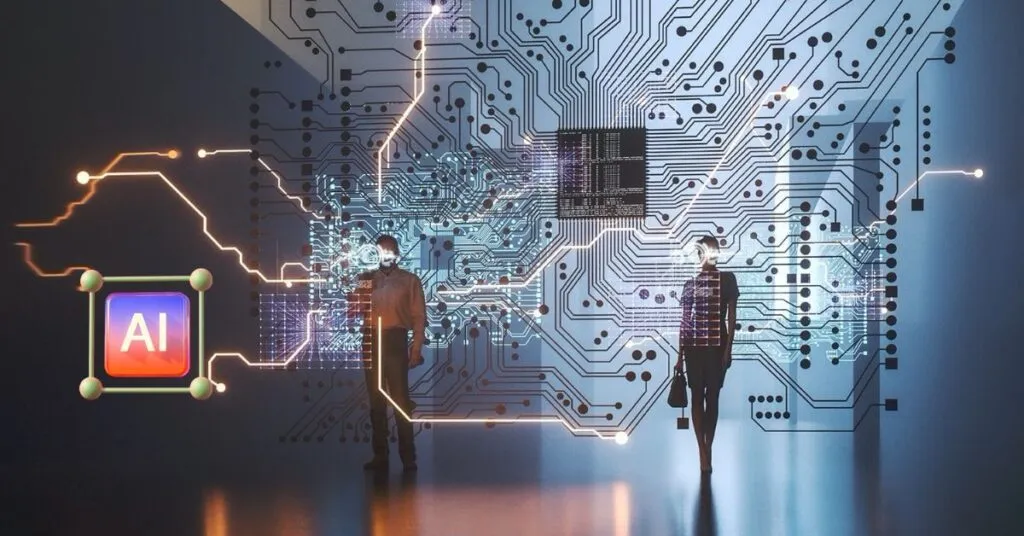Top 8 AI Cyber Threats and How to Prevent Them – Artificial intelligence (AI) cyber threats are the possible risks and hazards connected with the usage of AI technologies in cybersecurity. AI is susceptible to manipulation and hacking, and it may also be used to launch harmful assaults like botnets, deepfakes, and phishing using AI.
Creating secure AI systems, educating users about these threats, and routinely updating AI systems with the most recent security measures are all necessary to limit the risks posed by AI cyber threats.
Cyberthreatshave recently found howAIcan be used todeceive targets. Among the different types of threats, there are 5 that scare the most. After having quoted them, we will devote a few lines to detail the possible preventions.
Top 8 AI Cyber Threats
These are cyberattacks against which traditional cybersecurity defenses have failed:
AI-Powered Phishing Attacks
A major issue in the field of cybersecurity is phishing using AI. Phishing is a type of cyberattack in which hackers attempt to dupe people into disclosing private information, including passwords or financial information, by assuming the identity of a reliable organisation. These attacks are becoming more sophisticated and convincing thanks to AI.
InAI– poweredphishingattacks , hackers use more sophisticated techniques to createfake content. They thus introduce malware into multimedia content attached to phishing e-mails. The goal is to compromise the target’s system and network. To combat phishing, the CyberGraph module of Mimecast seems to present a good solution.
A growing issue, AI-powered phishing necessitates companies and people to be watchful and proactive in their own security. We can lessen the effects of these attacks and promote a safer and more secure online environment by remaining aware, putting security measures in place, and training staff members.
Botnets
An AI cyber threat called a botnet can seriously hurt both people and organisations. A network of compromised devices, like as laptops, smartphones, and Internet of Things (IoT) gadgets, under the control of a single attacker is known as a botnet. Various harmful activities, like as distributed denial of service (DDoS) assaults that can take down websites and interfere with internet services, can be carried out using these devices.
Because they may be used to launch widespread attacks that have a major impact on both companies and people, botnets are particularly dangerous. A DDoS assault launched by a botnet, for instance, might bring down a website and prevent visitors from accessing it. Financial losses and reputational harm to a corporation may result from this.
To summarise, botnets are a serious hazard that can hurt both persons and companies. We can assist avert the negative consequences of these attacks and promote a safer and more secure online world by encouraging people to safeguard their devices and keep an eye out for signals of suspicious behaviour.
Bias and Discrimination
Bias and Discrimination in artificial intelligence (AI) are becoming more of a problem as the use of AI in numerous sectors and applications expands. Data is used to create and train AI algorithms and models, and if this data is biassed or discriminatory, it can perpetuate these faults throughout the AI system.
Facial recognition algorithms, for example, that have been trained on biassed data sets might produce inaccurate and discriminating results, particularly for individuals of colour. Similarly, it has been discovered that AI algorithms utilised in the criminal justice system are biassed towards particular racial and ethnic groups, resulting in false arrests and disproportionate punishment.
To summarise, bias and discrimination in AI are important issues that have the potential to do enormous harm to people as well as society as a whole. To address this issue, a multifaceted approach is required, including transparency, continual monitoring and training, and involvement with varied communities. We can assist ensure that AI systems are fair, inclusive, and beneficial to all by following these steps.
Hacking and Manipulation
In the field of artificial intelligence, hacking and manipulation are major worries (AI). As AI is used more often across a wide range of fields and applications, hackers and other bad actors are developing new strategies for taking advantage of and abusing these systems.
AI systems, for instance, can be breached to allow illegal access to private information like financial and personal information. Hackers occasionally have the ability to manipulate AI models and algorithms to produce misleading results or engage in harmful actions like disseminating false information or conducting cyberattacks.
Additionally, businesses should be open and honest about the data, algorithms, and outcomes produced by their AI systems. This will make it easier to verify the reliability of AI systems and the absence of any malicious manipulation of their output.
In conclusion, the world of AI faces major challenges from hacking and manipulation. Organizations can help stop these kinds of assaults and guarantee that AI is utilised in a safe and responsible manner by putting robust security measures in place and being open about AI systems.
Read Also: The Major Upcoming Trends in Cybercrimes
Ransomware and Malware
A phishing email can also contain AI-powered malware . Such software runs when the target uses specific software. It can be the opening of the camera for example. Once downloaded, the software scans the system and replicates normal system operation. Its user then continues to use it as if everything was fine. However, the malware is already beginning its attack.
Data Compromise
AI/ML is also an alarming cyber threat. This is because machine learning allows cybercriminals to cause unintended triggers . In this way, they will be able to access the system through a compromised access.
Cybercriminals could thus compromise various types of data that they have misclassified. This violation not only concerns the data affected, but can act in a sprawling way, i.e. poison other data.
Wrong Analysis of Insider Actions
Most cyber threats come from an external source. However, insider credentials can be another source of malware intrusion or data leakage . In a company, new recruits benefit from an introduction to the use of the network, of the system. These initiates can make mistakes at first.
Deepfakes
One of the most worrisome AI cyberthreats of our day is deepfakes. Deepfakes are artificial intelligence (AI) produced fake images or videos that are realistic enough to trick even the most sceptic observer.
They were developed using deep learning algorithms, which can change the appearance of people and their speech and facial emotions in both photos and videos. Anyone with a computer and an internet connection can now make deepfakes thanks to this technology’s rising sophistication and accessibility.
Comprising Deep Voice and Deep Face,deepfakesare made from the latest AI-powered technology. These techniques are becoming essential tools for cybercriminals. They use them toextort funds, to threaten or to introduceransomware. Users without an advanced level in AI can easily be mistaken.
In conclusion, deepfakes pose a major threat that is rising quickly. Deepfakes are anticipated to increase as AI technology gets more advanced and widely available, thus it is critical that businesses and individuals take precautions to protect themselves.
We can aid in preventing the harmful effects of deepfakes and ensuring a safer and more secure online environment by remaining aware, exercising caution, and utilising the most recent technologies.
Conclusion
As the application of artificial intelligence (AI) grows, preventing AI cyber risks becomes increasingly vital. AI systems are vulnerable to a variety of dangers, including hacking and manipulation, bias and discrimination, and botnets, all of which have the potential to inflict considerable harm to persons and organisations.
As a result, mitigating AI cyber risks necessitates a multifaceted strategy that involves putting in place robust security measures, encouraging openness and inclusivity, and being ready to act in the event of an incident. Organizations can ensure that AI technologies are utilised safely and responsibly and that everyone enjoys its benefits by taking these steps.

Pradeep Sharma is a author the mind behind Techjustify, where I craft insightful blogs on technology, digital tools, gaming, AI, and beyond. With years of experience in digital marketing and a passion for tech innovation, I aim to simplify complex topics for readers worldwide.
My mission is to empower individuals with practical knowledge and up-to-date insights, helping them make informed decisions in the ever-evolving digital landscape.




